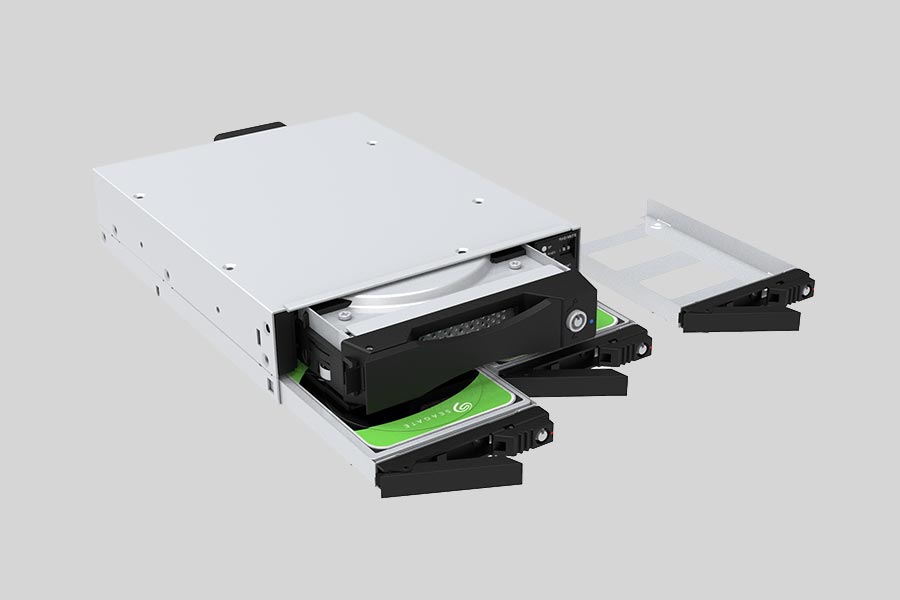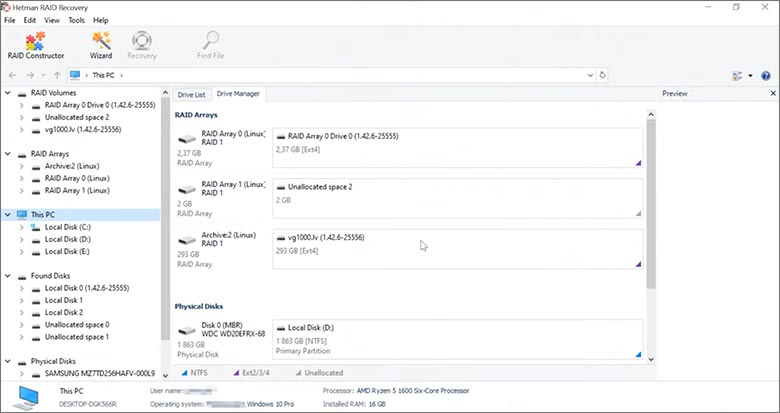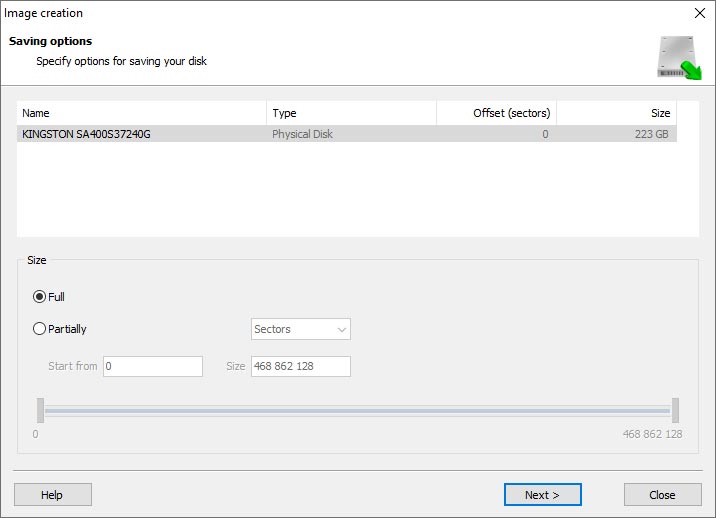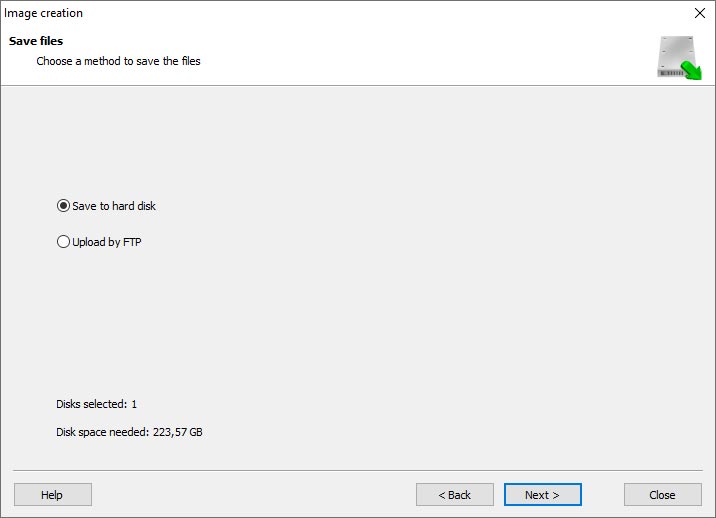
- Why can’t ordinary software tools restore files from RAID?
- This is important to know about NAS Raidon InTANK iR2300
- How to take hard disks out of the NAS and connect them to a PC?
Why can’t ordinary software tools restore files from RAID?
Conventional hard disks keep user’s data by writing it to their surface in a consecutive way, and this is how an entire file is stored on a single hard disk. However, when data is written to a RAID system, a file is divided into several parts. Then these parts are written consecutively to all hard disks within such array. The size of such parts may range from 2 KB to 2 MB, so each file is stored on several hard disks at the same time.
Such approach helps to speed up read and write operations, and it is evident that saving two parts of a file having the size of 1 GB to two hard disks simultaneously is much faster than saving the same 1 GB of data to one hard disk. However, this peculiarity makes file recovery more complicated.
Various RAID levels store information in different ways. Additionally, manufacturers like Raidon also introduce some modifications to this process, and that is why data can be written to hard disk in a wide variety of ways.
Can improper handling or maintenance of NAS Raidon InTANK iR2300 device hardware lead to data loss?
Yes, improper handling or maintenance of the NAS Raidon InTANK iR2300 device hardware can potentially lead to data loss. Some possible scenarios include:
- Physical damage: Dropping or mishandling the device can cause damage to the internal components, including the hard drives. This can result in data corruption or loss.
- Power surges or electrical issues: If the device is not properly protected against power surges or electrical issues, it can cause damage to the hardware and potentially result in data loss.
- Overheating: Inadequate cooling or ventilation can lead to overheating of the device, which can cause damage to the hard drives and result in data loss.
- Improper installation: Incorrect installation of the hardware or failure to follow the manufacturer's guidelines can lead to issues with data integrity and potential data loss.
- Lack of regular maintenance: Failure to perform regular maintenance tasks such as firmware updates, disk checks, or cleaning can increase the risk of hardware failure and data loss.
It is important to handle and maintain the NAS Raidon InTANK iR2300 device hardware properly to minimize the risk of data loss.
How to take hard disks out of the NAS and connect them to a PC?
Although NAS InTANK iR2300 can be accessed over the network, you still need to take the hard disks out of the storage device and connect them to a Windows computer. Only in this case will the software be able to scan them properly. Here is what you should do:
-
Turn off the storage and disconnect it from the power supply.
WARNING! Before you start taking hard disks out of your NAS device, read the manual carefully. Incorrect actions may damage your network-attached storage and/or the hard disks within the RAID system.
-
Take the hard disks out of the NAS one by one, carefully removing them from their slots. Remember that the disks are extremely vulnerable: hitting or dropping them may result in serious physical damage.
-
Make sure to mark each hard disk in accordance with how they were installed inside the NAS.
-
Remove the hard disks and connect them to the computer. In this video, we have explored what ports are used to connect hard disks, and what to do if there are not enough ports or connectors.
Go to view
Restoring data with Hetman RAID Recovery

This program recovers data from damaged RAID arrays and is fully compatible with Raidon InTANK iR2300. The hard disks that make up the RAID contain technical information about the algorithm used to save files. When launched, Hetman RAID Recovery reads this information and puts the damaged array together. Then you can open the disk and save your files. Also, you can recover the files accidentally deleted from the network drive.

How to recover data from a Raidon
InTANK iR2300 has 3 HDD slots, and it supports the following array types:
- RAID 0;
- RAID 1;
- RAID 5;
- JBOD;
NAS supports:
- APFS / HFS+;
- Ext2 / Ext3 / Ext4;
Safe recovery from disk images
This utility lets you save an entire copy of the disk to file and then work with this image instead of the actual disk. Such feature helps to protect data on the disk from:
- Overwriting during the recovery process;
- Loss resulting from bad sectors;
- User mistakes.
To create an image, do the following:
-
Make sure that you have enough free space to save the image. The image file size usually equals the disk size.
-
Select the disk in the main window, and choose from the menu Tools – Save Disk. You can select multiple disks to be saved.
-
When the image creation wizard starts, you can choose to save the entire disk or select only a part of it. Specify the parameters and click Next.

-
At this stage, you need to choose a directory where to save the image. Choose any disk connected to this PC, or save the image by FTP.

Where are user’s files stored?
The Raidon InTANK iR2300 network-attached storage keeps OS Linux operating system files on a separate RAID 1 (mirrored) array. Usually, all NAS systems create several volumes on every hard disk, and the first of them takes up to 2 Gb of space. This is where operating system files are stored. Other volumes are united into a RAID array where user’s data is written.
Comparison of software for RAID recovery
| Product | Operating system | License type | RAID controller support | Supported file systems | Virtual RAID controller support | Data recovery from damaged RAID | File preview |
|---|---|---|---|---|---|---|---|
| Hetman RAID Recovery | Windows | Paid | Yes, over 100 controllers | FAT, exFAT, NTFS, ReFS, APFS, HFS+, Ext4, Ext3, Ext2, ReiserFS, Btrfs, VMFS, Hikvision, XFS, UFS, ZFS | Yes | Yes | Yes |
| DiskInternals RAID Recovery | Windows | Paid | Yes, over 10 controllers | FAT, NTFS, Ext2/3/4, HFS+ | No | Yes | Yes |
| R-Studio | Windows, Mac, Linux | Paid | Yes, over 20 controllers | FAT, NTFS, Ext2/3/4, HFS+ | Yes | Yes | Yes |
| UFS Explorer RAID Recovery | Windows, Mac, Linux | Paid | Yes, over 100 controllers | FAT, NTFS, Ext2/3/4, HFS+ | Yes | Yes | Yes |
| EaseUS Data Recovery | Windows | Paid | Yes, over 20 controllers | FAT, NTFS, Ext2/3/4, HFS+ | No | Yes | Yes |
| ReclaiMe Free RAID Recovery | Windows | Free | Yes, over 100 controllers | FAT, NTFS, Ext2/3/4, HFS+ | Yes | Yes | Yes |




Yes, data recovery from a NAS Raidon InTANK iR2300 device can still be performed even if there are issues with network connectivity. NAS devices like the Raidon InTANK iR2300 typically have multiple ways to access the data stored on them. In addition to network connectivity, they often have USB ports or direct-attached storage (DAS) options that allow you to connect directly to the device.
If there are network connectivity issues, you can try connecting to the device using a USB cable or directly attaching it to a computer using DAS options if available. This way, you can still access the data stored on the NAS device and perform data recovery procedures.